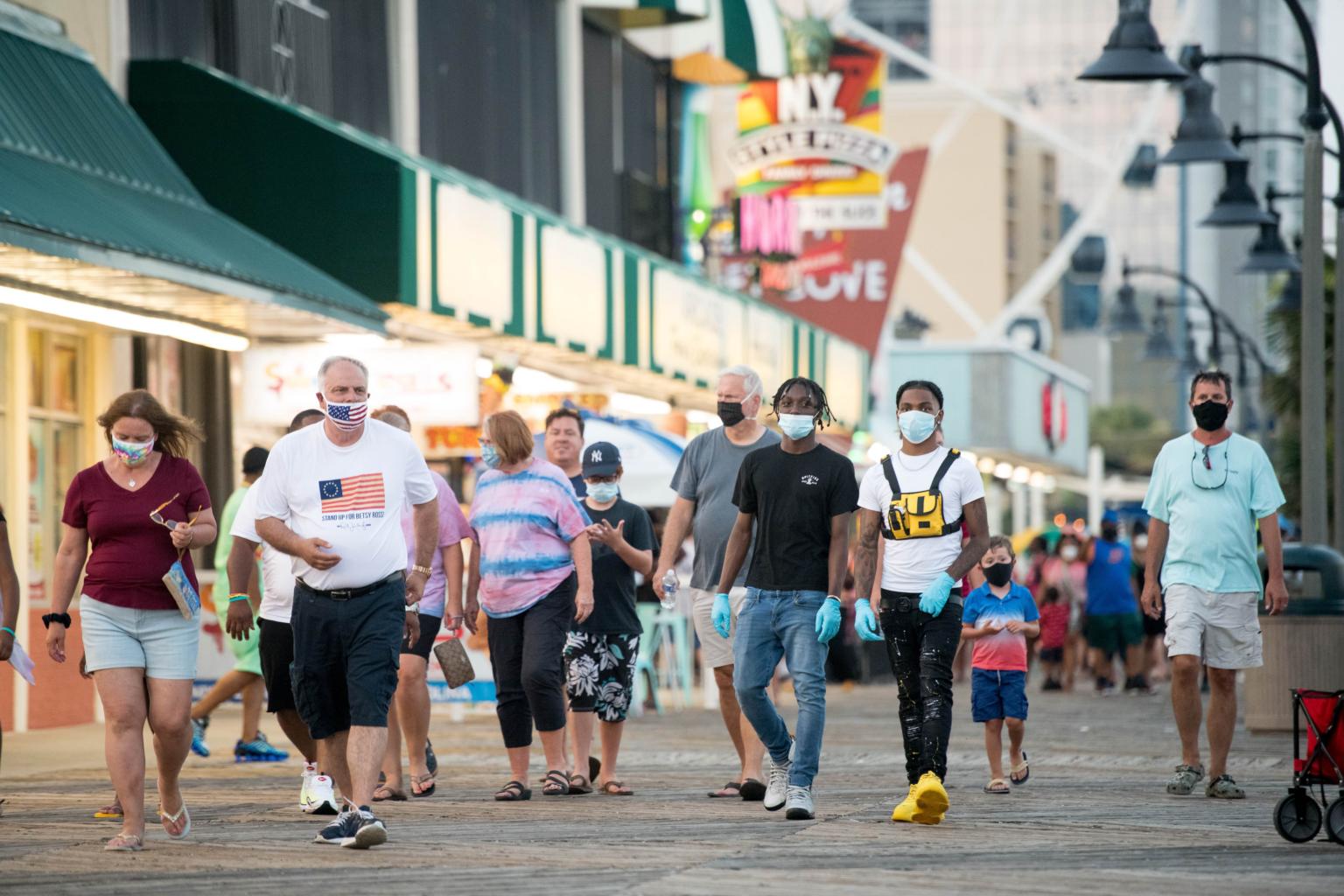Why the coronavirus is more likely to 'superspread' than the flu
Sign up now: Get ST's newsletters delivered to your inbox

Between 10 per cent and 20 per cent of coronavirus cases may seed 80 per cent of new infections.
PHOTO: AFP
Follow topic:
NEW YORK (NYTIMES) - For a spiky sphere just 120 nanometres wide, the coronavirus can be a remarkably cosmopolitan traveller.
Spewed from the nose or mouth, it can rocket across a room and splatter onto surfaces; it can waft into poorly ventilated spaces and linger in the air for hours.
At its most intrepid, the virus can spread from a single individual to dozens of others, perhaps even a hundred or more at once, proliferating through packed crowds in what is called a superspreading event.
Such scenarios, which have been traced to call centres, meat-processing facilities, weddings and more, have helped propel a pandemic that, in the span of eight months, has reached nearly every corner of the globe.
And yet, while some people seem particularly apt to spread the coronavirus, others barely pass it on.
"There's this small percentage of people who appear to infect a lot of people," said Dr Joshua Schiffer, a physician and mathematical modeling expert who studies infectious diseases at the Fred Hutchinson Cancer Research Centre in Seattle.
Estimates vary from population to population, but they consistently show a striking skew: Between 10 per cent and 20 per cent of coronavirus cases may seed 80 per cent of new infections.
Other respiratory diseases, like the flu, are far more egalitarian in their spread.
Figuring out what drives coronavirus superspreading events could be key to stopping them, and expediting an end to the pandemic.
"That's the million-dollar question," said Dr Ayesha Mahmud, who studies infectious disease dynamics at the University of California, Berkeley.
In a paper posted on Friday (Aug 7) to the website medRxiv that has not yet been through peer review, Dr Schiffer and his colleagues reported that coronavirus superspreading events were most likely to happen at the intersection where bad timing and poor placement collide: a person who has reached the point in his infection when he is shedding large amounts of virus, and is doing so in a setting where there are plenty of other people around to catch it.
According to a model built by Dr Schiffer's team, the riskiest window for such transmission may be extremely brief - a one- to two-day period in the week or so after a person is infected, when coronavirus levels are at their highest.
The virus can still spread outside this window, and individuals outside it should not let up on measures like mask-wearing and physical distancing, Dr Schiffer said.
But the longer an infection drags on, the less likely a person is to be contagious - an idea that might help experts advise when to end self-isolation, or how to allocate resources to those most in need, said Dr Mahmud, who was not involved in the study.
"It really is about opportunity," said Associate Professor Shweta Bansal, an infectious disease ecologist at Georgetown University who was not involved in the study.
"These processes really come together when you are not only infected, but you also don't know you're infected because you don't feel crummy."
Some of these unwitting coronavirus chauffeurs, emboldened to go out in public, may end up causing a superspreading event that sends the pathogen blazing through a new population.
This confluence of factors - a person in the wrong place at the wrong point in his infection - sets the stage for "explosive transmission," Dr Bansal said.
The team's model also pointed to another important variable: the remarkable resilience of the coronavirus when it is aloft.
A growing body of evidence now suggests that the coronavirus can be airborne in crowded, poorly ventilated indoor environments, where it may encounter many people at once.
The virus also travels in larger, heavier droplets, but these quickly fall to the ground after they are expelled from the airway and do not have the same reach or longevity as their smaller counterparts.
Dr Schiffer said he thought the coronavirus might be more amenable to superspreading than flu viruses because it is better at persisting in contagious clouds, which can ferry pathogens over relatively long distances.
"This study adds yet another layer to how it's different from influenza," said Dr Olivia Prosper, a researcher at the University of Tennessee who uses mathematical models to study infectious diseases but was not involved in the study.
"It's not just about how sick it makes you, but also its ability to transmit."
Moreover, certain people may be predisposed to be more generous transmitters of the coronavirus, although the details are "still a mystery", Dr Schiffer said.
But when a superspreading event occurs, it likely has more to do with the circumstances than with a single person's biology, he said.
Even someone carrying a lot of the coronavirus can stave off mass transmission by avoiding large groups, thus depriving the germ of conduits to travel.
"A superspreading event is a function of what somebody's viral load is and if they're in a crowded space," he said.
"If those are the two levers, you can control the crowding bit."
Both Dr Mahmud and Dr Prosper noted that not everyone has the means to practise physical distancing.
Some people work essential jobs in packed environments, for instance, and are left more vulnerable to the consequences of superspreading events.
That makes it all the more important for those who can participate in control measures like mask-wearing and physical distancing to remain vigilant about their behavior, Dr Mahmud said.
"That's what we should be doing," she said. "Not just to protect ourselves, but to protect others."

